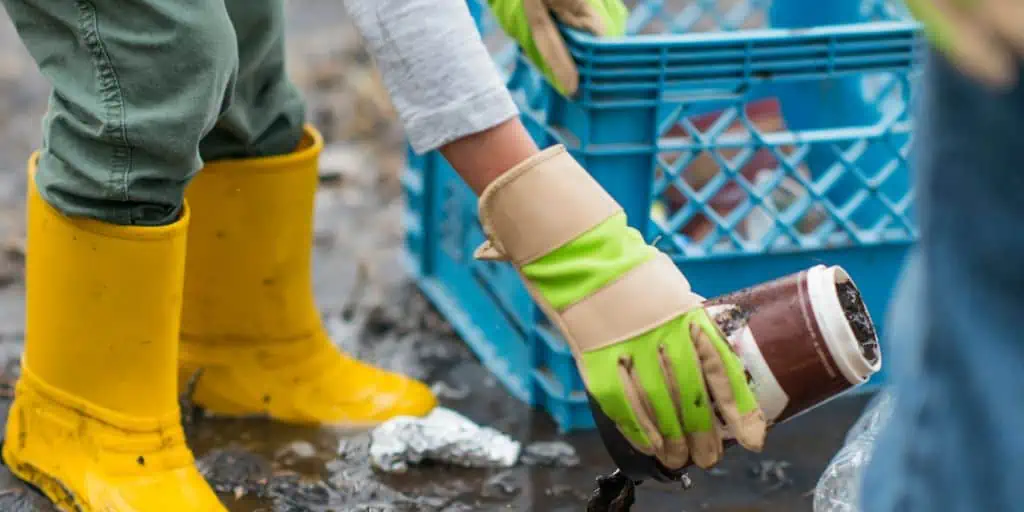What Is Environmental Remediation?
Shortcuts
- Environmental remediation refers to the process of cleaning up contaminated land and real property on that affected land to make it safe for human use.
- An environmental remediation project is a highly important part of due diligence in real estate, especially since there are local, state, and federal laws regarding the remediation of contaminated property.
- Owners of contaminated land or property face fines or lawsuits from parties, including the government, who may be affected by contaminants in the property.
- Environmental remediation specialists may treat contaminated soil, groundwater, fresh water supply, or even the presence of gases that pose a health risk to human occupants.
What Is Environmental Remediation For?
The goal of environmental remediation is to return contaminated land to its original state (or as close to it as possible). Failing that, environmental remediation attempts to make the property at least safe for human use and occupancy and remove its risk to the environment[1].
The environmental remediation process can involve a variety of techniques, tools, and technologies. One example of environmental remediation is reducing the exposure of soil, surface water, and/or groundwater to harmful chemicals. An environmental consultant or company (or companies, depending on the size of the property and degree of contamination) is typically hired for this purpose.
Many factors, almost all of them man-made, typically cause environmental pollution and contamination. Industrial activities with unethical waste management processes, leakage from underground storage tanks, or contamination from nearby landfills or hazardous waste sites are prime examples. Some natural disasters may also bring contaminants to property or a parcel of land from another location.
Some contamination may also happen naturally. For example, some natural phenomena can bring about a slow environmental decline over the long term.
After a remediation project is completed, further study may be required to see if it is safe for human use, usually for housing[2].
Environmental Remediation in Real Estate
Environmental remediation is an important consideration for real estate developers, property owners, and potential buyers, as contaminated land can be difficult and expensive to clean up, and may have significant negative effects on property values and development potential.
Some areas, like industrial zones and the surrounding areas, are more prone to environmental contamination than others.
Therefore, environmental remediation services are an important part of due diligence, particularly after an inspection of the property has discovered the presence of contaminants. Depending on the owner, developer, or lender, they may order a Phase III Environmental Site Assessment (ESA), which strives to remove the hazardous materials and contaminants from the property before development.
Depending on the level of contamination, environmental remediation may fall under applicable environmental laws, such as the Superfund sites or the Resource Conservation and Recovery Act (RCRA)[3]. In this scenario, remediation is a legal requirement before the property can be developed[6].
Violations can result in fines or paying for the cost of the cleanup. At times, even after completing remediation, owners who were found to have willingly ignored the contaminants found in an environmental site assessment may be held accountable for the additional cost of continuing remediation. These costs are often steep, affecting property marketability[7].
Why Environmental Remediation Is Important
Environmental remediation is important not only to comply with regulatory requirements but also for human safety and health.
Here are some specific examples where environmental remediation is useful[5]:
- Land previously used and later abandoned may be polluted or contaminated. Remediation can rehabilitate this idle property and restore it to its highest and best use.
- A remediated land can help revitalize its ecosystem by reducing water runoff, therefore improving hydrological regulation. As a result, it improves the water supply, which is especially important for farmland and housing developments.
- Environmental remediation of a contaminated site contributes to its community’s visual appeal and quality of life, boosting the property values of the neighborhood.
- Removing hazardous substances on contaminated land minimizes its toll on the environment.
- Higher-value developments can be constructed after environmental remediation—for instance, converting properties like junkyards into parking lots.
These are just examples, and this list is by no means exhaustive.
How Does Environmental Remediation Work?
Environmental remediation seeks to restore the natural state of land before it was polluted by dangerous substances, artificial or otherwise. Remediation projects often work by following a series of steps involving investigation, detection, and assessment. These steps are generally done in Phases I and II of an Environmental Site Assessment.
The actual remediation will usually depend on the contamination—which properties are affected, the extent, the size, the quantity and type of toxic chemicals present, and which aspects of the land are contaminated.
Most remediation techniques use the following[8].
Soil Remediation
This process removes contaminants like petroleum hydrocarbons and heavy metals from the soil and replaces the contaminated soil with clean fill. Thermal soil remediation, encapsulation, and bioremediation (by introducing microorganisms in the contaminated area to break down contaminants) are additional approaches.
Groundwater Remediation
This involves biodegrading groundwater pollutants into harmless products. Installing groundwater barrier systems is part of this remediation.
Surface Water Remediation
In contamination cases where surface water (e.g., lakes, rivers, streams, and wetlands) is affected, the method differs from groundwater remediation. Its solutions include in situ treatment, interceptor systems, or pumping systems[9].
Sediment Remediation
This technique addresses a mix of water and soil pollution, thus requiring different approaches. Sediment remediation technologies involve physical, chemical, and biological processes, which reduce the volume of contaminants to a federally accepted level or at least convert them into less harmful substances.
Vapor Remediation
Vapor contaminants are gases that can be inhaled by humans and are detrimental to health. This remediation calls for installing vapor intrusion mitigation systems in the interior of structures where there is a possibility of inhaling chemical vapors from contaminated soil and groundwater.
Physical solutions may also be used, such as sealing cracks in the floor slabs or filling gaps around basement utility lines and pipes. Pouring concrete over unfinished dirt floors is another solution[9]. In some cases, environmental engineers may also attempt soil vapor extraction.
Sources
- Kalita, E., Baruah, J. (2020.) Environmental remediation. Science Direct. Retrieved from https://www.sciencedirect.com/science/article/
- International Atomic Energy Agency. (n.d.) Getting to the Core of Environmental Remediation. Retrieved from https://www.iaea.org/sites/default/files/18/05/environmental_remediation.pdf
- U.S. Environmental Protection Agency. (n.d.) Contaminated Land. Retrieved from https://www.epa.gov/report-environment/contaminated-land
- Connolly, A., and Goslin, T.D. (2016.) Environmental Due Diligence in Real Estate Transactions. RELX. Retrieved from https://sdgresources.relx.com/legal-practical-guidance/environmental-due-diligence-real-estate-transactions
- International Association of Assessing Officers. (2016.) Standard on the Valuation of Properties Affected by Environmental Contamination. Retrieved from https://www.iaao.org/media/standards/Contamination_2016.pdf
- Alpha-Omega Training and Compliance. (2020.) Top 10 Benefits of Environmental Remediation Services. Retrieved from https://a-otc.com/top-10-benefits-of-environmental-remediation-services
- EPAC Environmental Services. (2017.) 4 Different Types of Remediation, and Why They Are Important. Retrieved from http://www.epacinc.com/types-remediation-important/
- Anderson Engineering. (n.d.) The Main Three Types of Environmental Remediation and Reclamation. Retrieved from https://www.andersoneng.com/the-main-three-types-of-environmental-remediation-and-reclamation/
- U.S. Environmental Protection Agency. (2012.) A Citizen’s Guide to Vapor Intrusion Mitigation. Retrieved from https://www.epa.gov/sites/default/files/2015-04/documents/a_citizens_guide_to_vapor_intrusion_mitigation_.pdf









